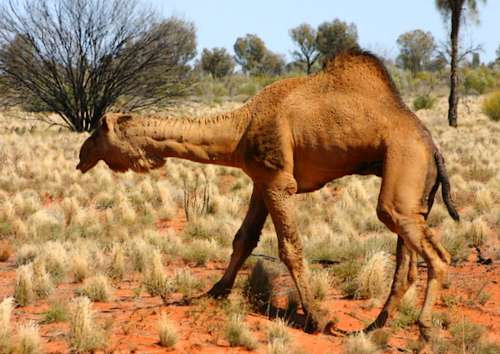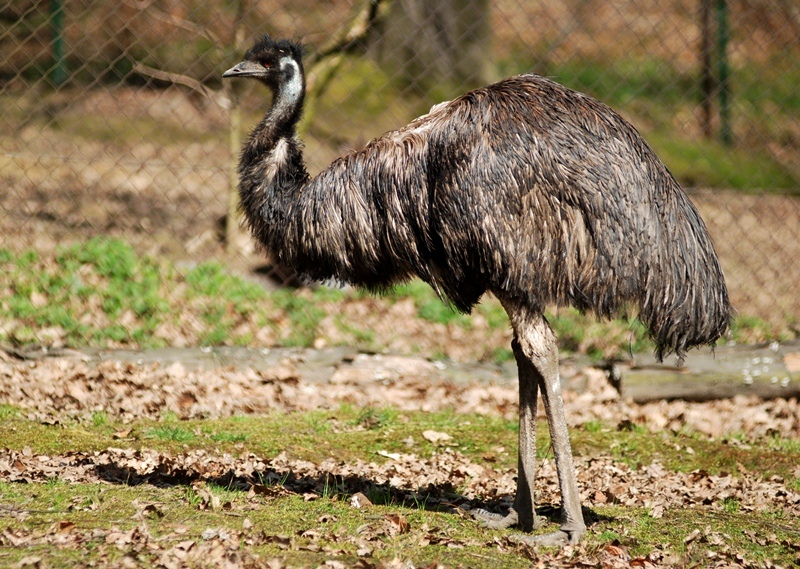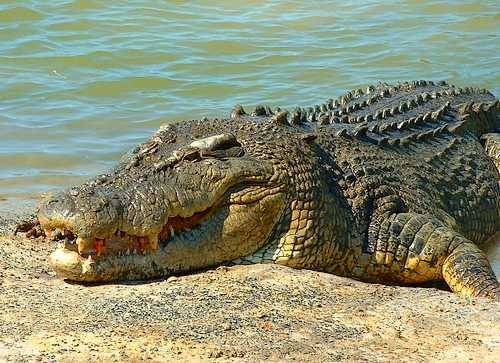Source(google.com.pk)
Australian Animal Pictures Biography
Lyrebirds are notable songsters and impersonators. They can impersonate practically any sound they hear from their environment, including human sounds like mill whistles, chainsaws, fire alarms, car alarms, car engines, explosions, camera shutters, rifle-shots, crying babies, human voice and even music. They can also mimic the call of other birds and barking of dogs. They also have their distinctive own calls that are meant for other activities.
Home
The Zoo
Visitors Info
Tickets
Events
Gallery
Contact Us
Lyrebird
Lyrebirds are ground-dwelling birds that are native to Australia. They are known for their noteworthy mimicking abilities, unique tails and plumes as well as interesting courtship display.
Family, Genus and Species
There are two species of Lyrebirds that make up the genus “Menura” as well as the family “Menuridae”. They are namely:
“Menura alberti”: Albert’s Lyrebird
“Menura novaehollandiae”: Superb Lyrebird
Description
Here is a brief description of the physical appearance of these birds:
Length: The Superb Lyrebird is larger in size among the two species and resembles a large-sized brown pheasant. The males are between 80 cm and 100 cm long and the females are around 74 cm to 84 cm long. The Albert’s Lyrebird is somewhat smaller, with the average length for the males being around 90 cm and for the females around 84 cm.
Weight: The Superb Lyrebird weighs around 2.2 lb (1 kg), whereas the Albert’s Lyrebird weighs slightly less than that.
Color: The wings have a rufous coloration. The feathers on top of these birds’ bodies are darkish brown in color whereas the underparts are much lighter. They have red or brown markings around their throat. The legs, feet and bill are black in color.
Tail: The adult male Superb Lyrebird has got an ornate tail comprised of 16 feathers; 2 lyrates, 2 medians as well as 12 filaments that are thrown over the head like a shimmering fan while on display. While not in display, the male bird holds its tail behind. The tail feathers of the female bird lack the elaborateness of the male and have got a long, dingy brown appearance. The lyrate feathers of the Albert’s Lyrebird are smaller in size and less magnificent than that of the Superb Lyrebird, but are otherwise similar.
Wings: The wings are short and rounded.
Behavior
Lyrebirds are an interesting species both in terms of their appearance as well as their behavioral characteristics. Here are some of the main behavioral features of these birds:
Lyrebirds mostly tend to feed alone; however the females and the young males are often seen feeding together.
They can be very shy, thereby making it difficult for the humans to approach them.
Male Lyrebirds are polygamous in nature.
The males exhibit territorial behavior during the mating season.
Although they are mostly ground dwelling birds, at night they roost in low tree tops.
They are generally sedentary and prefer staying within the same home range.
Although these birds sing throughout the entire year, it is especially during the breeding season that they are heard singing extensively for most part of the day.
If alarmed, they will give out loud, high-pitched shrieks of alarm and try to run away using its legs and toes or hide behind vegetation.
Flight
Lyrebirds are quite awkward flyers. Their wings allow them to only glide for short distances and mostly help them to jump and run around.
Calls
Lyrebirds are notable songsters and impersonators. They can impersonate practically any sound they hear from their environment, including human sounds like mill whistles, chainsaws, fire alarms, car alarms, car engines, explosions, camera shutters, rifle-shots, crying babies, human voice and even music. They can also mimic the call of other birds and barking of dogs. They also have their distinctive own calls that are meant for other activities.










Australian Animal Pictures Biography
Lyrebirds are notable songsters and impersonators. They can impersonate practically any sound they hear from their environment, including human sounds like mill whistles, chainsaws, fire alarms, car alarms, car engines, explosions, camera shutters, rifle-shots, crying babies, human voice and even music. They can also mimic the call of other birds and barking of dogs. They also have their distinctive own calls that are meant for other activities.
Home
The Zoo
Visitors Info
Tickets
Events
Gallery
Contact Us
Lyrebird
Lyrebirds are ground-dwelling birds that are native to Australia. They are known for their noteworthy mimicking abilities, unique tails and plumes as well as interesting courtship display.
Family, Genus and Species
There are two species of Lyrebirds that make up the genus “Menura” as well as the family “Menuridae”. They are namely:
“Menura alberti”: Albert’s Lyrebird
“Menura novaehollandiae”: Superb Lyrebird
Description
Here is a brief description of the physical appearance of these birds:
Length: The Superb Lyrebird is larger in size among the two species and resembles a large-sized brown pheasant. The males are between 80 cm and 100 cm long and the females are around 74 cm to 84 cm long. The Albert’s Lyrebird is somewhat smaller, with the average length for the males being around 90 cm and for the females around 84 cm.
Weight: The Superb Lyrebird weighs around 2.2 lb (1 kg), whereas the Albert’s Lyrebird weighs slightly less than that.
Color: The wings have a rufous coloration. The feathers on top of these birds’ bodies are darkish brown in color whereas the underparts are much lighter. They have red or brown markings around their throat. The legs, feet and bill are black in color.
Tail: The adult male Superb Lyrebird has got an ornate tail comprised of 16 feathers; 2 lyrates, 2 medians as well as 12 filaments that are thrown over the head like a shimmering fan while on display. While not in display, the male bird holds its tail behind. The tail feathers of the female bird lack the elaborateness of the male and have got a long, dingy brown appearance. The lyrate feathers of the Albert’s Lyrebird are smaller in size and less magnificent than that of the Superb Lyrebird, but are otherwise similar.
Wings: The wings are short and rounded.
Behavior
Lyrebirds are an interesting species both in terms of their appearance as well as their behavioral characteristics. Here are some of the main behavioral features of these birds:
Lyrebirds mostly tend to feed alone; however the females and the young males are often seen feeding together.
They can be very shy, thereby making it difficult for the humans to approach them.
Male Lyrebirds are polygamous in nature.
The males exhibit territorial behavior during the mating season.
Although they are mostly ground dwelling birds, at night they roost in low tree tops.
They are generally sedentary and prefer staying within the same home range.
Although these birds sing throughout the entire year, it is especially during the breeding season that they are heard singing extensively for most part of the day.
If alarmed, they will give out loud, high-pitched shrieks of alarm and try to run away using its legs and toes or hide behind vegetation.
Flight
Lyrebirds are quite awkward flyers. Their wings allow them to only glide for short distances and mostly help them to jump and run around.
Calls
Lyrebirds are notable songsters and impersonators. They can impersonate practically any sound they hear from their environment, including human sounds like mill whistles, chainsaws, fire alarms, car alarms, car engines, explosions, camera shutters, rifle-shots, crying babies, human voice and even music. They can also mimic the call of other birds and barking of dogs. They also have their distinctive own calls that are meant for other activities.
Australian Animal Pictures

Australian Animal Pictures

Australian Animal Pictures

Australian Animal Pictures

Australian Animal Pictures

Australian Animal Pictures

Australian Animal Pictures

Australian Animal Pictures

Australian Animal Pictures

Australian Animal Pictures

Australian Animal Pictures
No comments:
Post a Comment